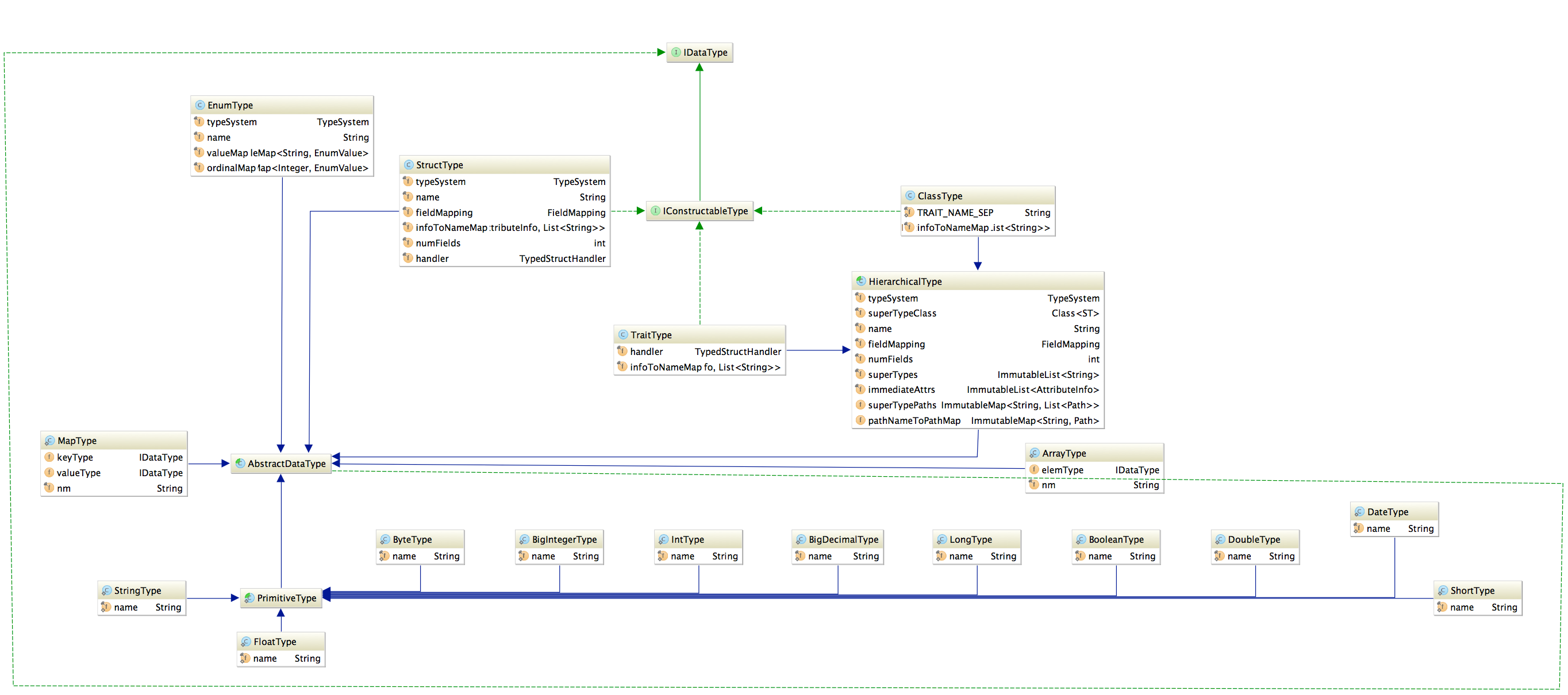Details
### Structs are like C structs - they don't have an identity - no independent lifecycle - like a bag of properties - like in hive, also
### Classes are classes - like any OO class - have identity - can have inheritence - can contain structs - don't necessarily need to use a struct inside the class to define props - can also define props using AttributeDefinition using the basic data types - classes are immutable once created
### On search interface: - can search for all instances of a class - classes could become tables in a relational system, for instance - also databases, columns, etc.
### Traits is similar to scala - traits more like decorators (?) - traits get applied to instances - not classes - this satisfies the classification mechanism (ish) - can have a class instance have any number of traits - e.g. security clearance - any Person class could have it; so we add it as a mixin to the Person class - security clearance trait has a level attribute - traits are labels - each label can have its own attribute - reason for doing this is: - modeled security clearance trait - want to prescribe it to other things, too - can now search for anything that has security clearance level = 1, for instance
### On Instances: - class, trait, struct all have bags of attributes - can get name of type associated with attribute - can get or set the attribute in that bag for each instance
### On Classification: - create column as a class - create a trait to classify as "PHI" - would create the instance of the column with the PHI trait - apply traits to instances - CAN'T apply traits to class
### Other useful information
HierarchicalClassType - base type for ClassType and TraitType Instances created from Definitions
Every instance is referenceable - i.e. something can point to it in the graph db MetadataService may not be used longterm - it is currently used for bootstrapping the repo & type system
Id class - represents the Id of an instance
When the web service receives an object graph, the ObjectGraphWalker is used to update things - DiscoverInstances is used to discover the instances in the object graph received by the web service
MapIds assigns new ids to the discovered instances in the object graph
Anything under the storage package is not part of the public interface



